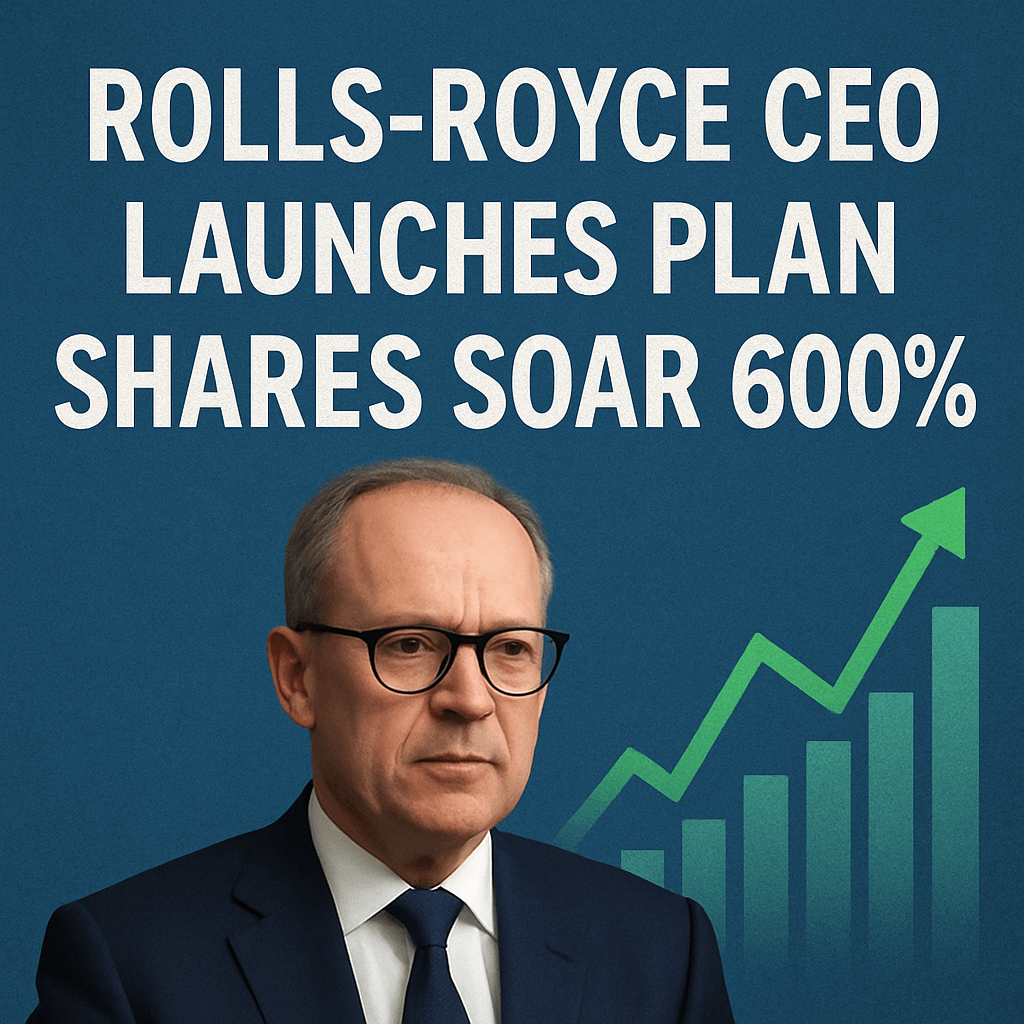Rolls-Royce CEO Launches Plan, Shares Soar 600%

Just two years ago, Tufan Erginbilgiç, who had recently assumed the role of CEO at Rolls-Royce, issued a stark warning to his employees, characterizing the company as a “burning platform” and signaling its critical juncture for survival. At that time, he expressed concern over the company’s history of eroding value with its investments. Following Erginbilgiç’s ascendance, the company’s transformation has been remarkable, culminating in a staggering 600% increase in share price and the achievement of profit projections two years earlier than anticipated.
Context of the Turnaround
At the time of Erginbilgiç’s appointment, Rolls-Royce was grappling with a significant decline in market valuation, primarily due to plummeting air travel amid the challenges posed by the pandemic. The company, which primarily manufactures engines for leading aircraft manufacturers such as Airbus and Boeing, was not only hindered by reduced demand in the aviation sector but also by unprofitable contracts with clients. As the global travel market began to recover, Rolls-Royce was able to renegotiate contracts and capitalize on the rebound, positioning itself for renewed growth.
Erginbilgiç’s 4-Pillar Strategy
In an interview with the Financial Times, a triumphant Erginbilgiç elaborated on a comprehensive “four pillars” strategy designed to revitalize the organization:
- Awareness of Challenges: The first pillar aimed to ensure that all employees grasped the depth of the difficulties facing the company. This narrative, initiated by Erginbilgiç’s initial comments about the company’s precarious situation, served to galvanize staff efforts towards change.
- Streamlining Management: Reflecting his desire to reduce bureaucracy, Erginbilgiç oversaw the dismissal of approximately 2,500 employees in 2023, primarily in middle management roles. Concurrently, he conducted brainstorming workshops involving 500 employees, allowing the organization to pool innovative ideas.
- Performance Metrics: Establishing 17 clear performance targets marked the third pillar. Key objectives included enhancing engine performance by increasing the time engines spend operational on aircraft rather than undergoing repairs, thereby maximizing profitability.
- Dynamic Execution: The final pillar emphasized urgency and precision in meeting these targets, with Erginbilgiç asserting that without a strategy that resonates throughout the 42,000-employee organization, successful execution remains elusive.
Impact of Technological Advancements
In addition to the four pillars, Erginbilgiç’s turnaround plan benefited from advancements in technology. The integration of Artificial Intelligence (AI) and data analytics into operations has provided Rolls-Royce with critical insights into engine performance and maintenance schedules. This not only reduced operational costs but also enhanced customer satisfaction through improved reliability. Similar to management tactics employed by other industry leaders, such as the “Fight Club” initiative at Sanofi, Erginbilgiç’s approach has focused on grassroots engagement and iterative improvement through technology.
Broader Implications within Corporate Strategy
Erginbilgiç’s bold tactics reflect a growing trend among corporate leaders who are increasingly embracing flattened hierarchies and adaptive management structures to foster innovation and agility. For example, Bayer’s recent restructuring included cutting over 5,000 jobs and empowering employees through self-organized teams. Such strategies abound in today’s complex economic environment, where traditional bureaucratic measures often hinder responsiveness and efficiency.
Conclusion
As Rolls-Royce continues to build on its resurgence, the successful implementation of Erginbilgiç’s turnaround plan could serve as a model for other organizations facing significant challenges. The emphasis on clear communication, rapid execution, and leveraging technology is likely to resonate across various industries adapting to a new business landscape.
Editor’s Note: A version of this article first appeared on Fortune.com on March 25, 2025.